Syn.: Calamintha hederacea (L.) Scop., Chamaecissos hederaceus (L.) Nieuwl. et Lunell, Chamaeclema hederacea (L.) Moench, Glechonion hederaceum (L.) St.-Lag., Nepeta glechoma Benth., Nepeta hederacea (L.) Trevis.
Family: Lamiaceae Martinov
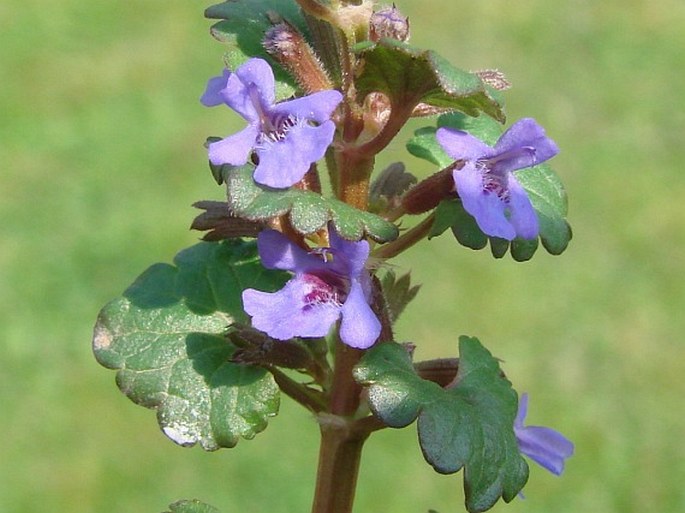
Distribution: Eurasian species, it occurs from Portugal and Ireland, through eastern Europe and western Siberia to Kazakhstan and western China. It was introduced to the Azores Islands, North and South America (southern Canada, USA, northern Mexico, Patagonia), southeastern Australia.
Ecology: It grows in woods, on grasslands and waste places, in damp soil. It blooms from March to July.

Destription: Perennial herb, stoloniferous, subglabrous or pubescent. Flowering stems up to 40(–60) cm long, ascending or erect, non-flowering stems creeping and rooting. Leaves petiolate, 4–35(–80) mm long and 6–40(–80) mm wide, reniform to suborbicular-cordate, coarsely crenate. Verticillasters 2- to 5-flowered, bracteoles 1–1.5 mm; calyx tubular-campanulate, 5–6.5 mm long, 2-lipped, upper lip with 3, lower lip with 2 teeth, shortly hispid or pubescent, teeth of upper lip 1/5–1/3 as long as tube, triangular; corolla (6–)15–22(–25) mm long, 2-lipped, tube straight, upper lip flat, lower lip 3-lobed, pale violet with purple spots on lower lip, rarely white or pink. The fruit is a nutlet.
Use: It is used as a medicinal plant, young plants are also used in salads and stuffings.
Note: The genus contains about 8 species from Europe and Asia.
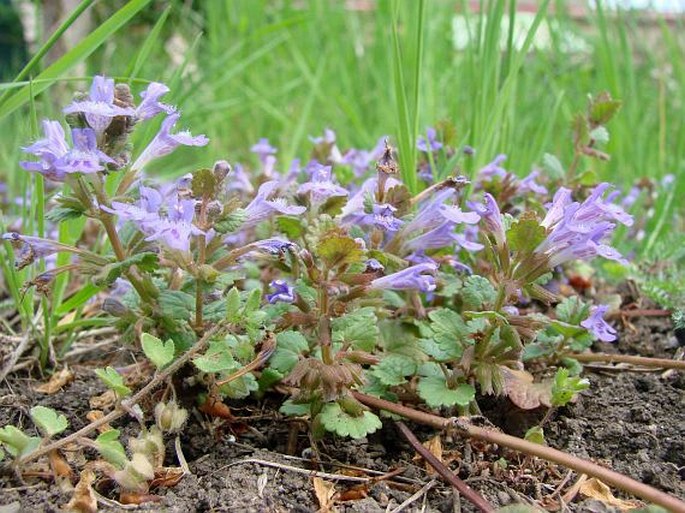

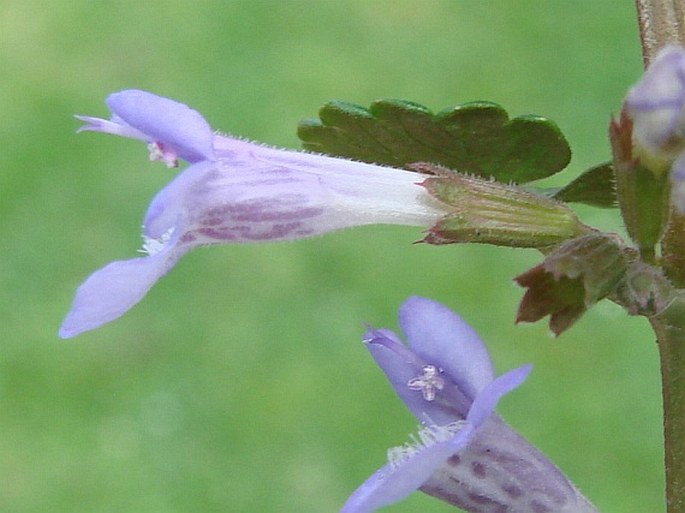
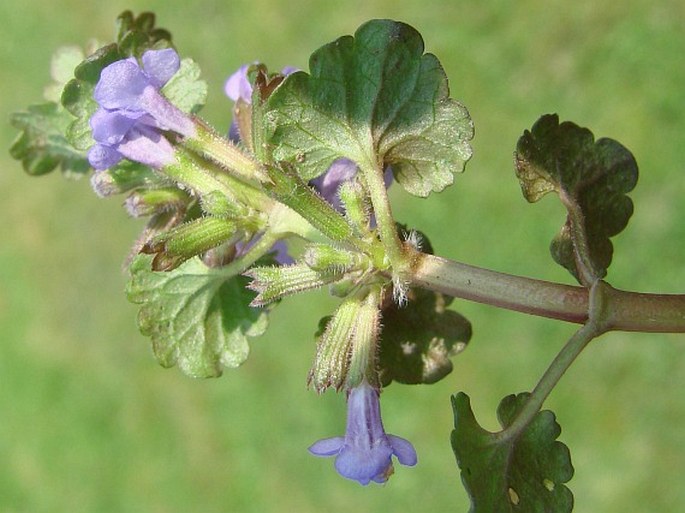
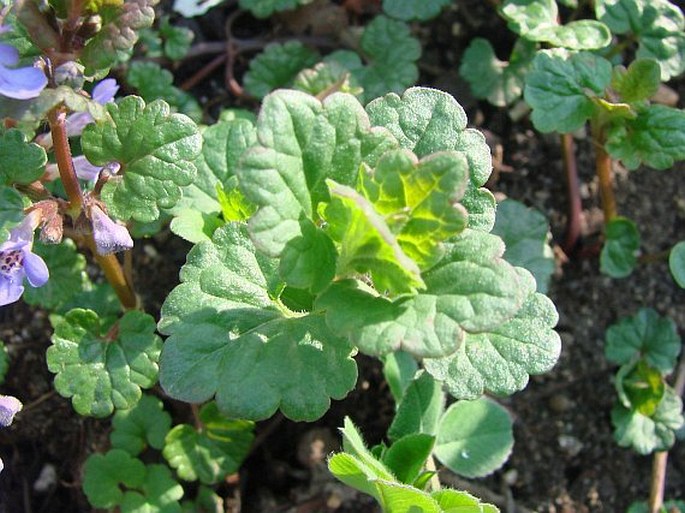
These images were taken in Czechia, Bohemia, Polabí (April 13, 2014).


